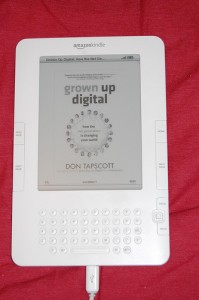Have you been wanting to write an ebook? I have a big one ebook so far, and the big thing I’ve learned about it is that I suck because it’s not available on the Kindle.
Whether you’re publishing a nonfiction informational title like my Make a Living Writing ebook or writing a novel, know that we all have to grapple with the greasy mess that is learning about digital publishing.
As those who tuned into my recent podcast with GhostwriterDad Sean Platt already know, the ability to create your own digital products is basically the best thing that has ever happened to freelance writers. No more wishing and hoping your life away waiting for some gatekeeping editor to give your idea their approval — you can be creating income from your own products.
Assuming, that is, you can stick your fanny in the chair and write them — and then figure out all the technical stuff. Yeah, the part that makes me cry.
When Sean told me had cooked up this new episodic-TV style suspense novel that’s for the Kindle, Yesterday’s Gone, I had tons of questions about how the heck he was pulling that off. So I’ve roped Sean into coming on the Freelance Writers Den meeting call this Thursday at noon PST/3 EST to talk more about digital publishing.
But in the meanwhile, I was able to nab him for a quick up-front Q&A on how he’s getting it done:
CT: When did you first publish for the Kindle?
SP: My writing partner, David Wright, and I have been talking about publishing for Kindle and other eReaders for a really long time. But it didn’t happen until March of this year when we first published Four Seasons, a book I’d finished a year earlier. Since then we’ve published an additional eight titles, with another dozen now in the queue.
CT: Man, you’re productive! What type of process did you use to get your product formatted for Kindle?
SP: My process is named David Wright! Funny, but true.
CT: Note to self: I need a tech partner…
We are developing new ways to systemize our process, so the flow from ideas to execution to final draft final upload is more seamless. Right now we do 100% of the heavy lifting. Ideally, we’ll be able to create content, then send it off to edit and layout, then off to a specialist who will upload it to Kindle and all the other eReaders.
Right now Dave does it all. In addition to his half of the writing, he does the preliminary and post editing, layout, cover design, and final upload. It’s not fair, but worse, it’s not scalable.
As far as a specific tool, I know he uses Scrivener on the Mac, which from what I understand helps the process quite a lot.
CT: What can you tell us about the various options — working with Amazon, CreateSpace, Smashwords, Lulu, etc.? I had a wretched experience once trying to buy an ebook off Smashwords…
SP: Great question.
I have no experience with Lulu, but from what I know, I don’t want any! Lulu would be perfect if I had a small boutique poetry title, but even my poetry title, Syllable Soup, aimed at children, I wouldn’t put on Lulu since I see them as having severe limitations.
Lulu seems like an ideal solution for smaller print-on-demand titles. But I prefer Kindle, especially because I no longer care about print for the majority of our titles. I started out wanting everything to go to print, but the desire faded as soon as I saw that our sales were coming almost exclusively from digital downloads.
CT: Is print dead for you?
SP: Print takes the longest time, and it also delivers the smallest return on investment. Yes, I miss traditional books, too. But I believe most writers will have experiences like me, and that means print is on its way out, except as a novelty.
Kindle: Flickr — arianravan










